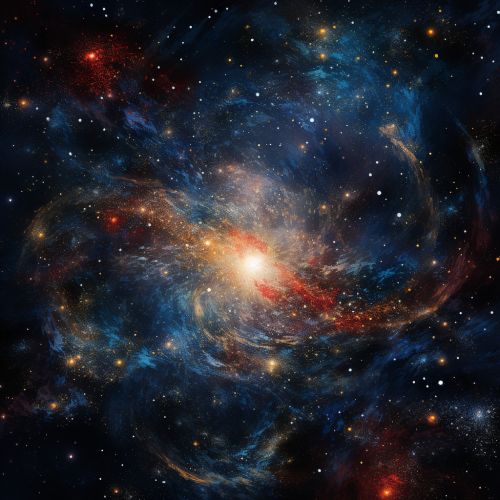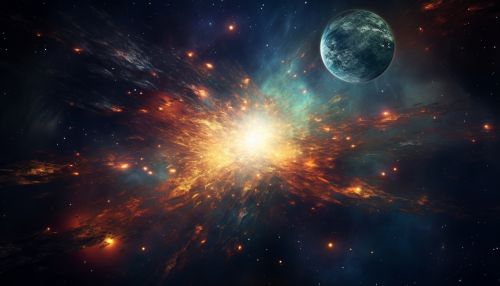Quintessence (physics)
Introduction
Quintessence is a hypothetical form of dark energy, postulated as an explanation of observations of an expanding universe. It has been proposed by some physicists to be a fifth fundamental force. Quintessence differs from the cosmological constant explanation of dark energy in that it is dynamic; that is, it changes over time, unlike the cosmological constant which, by definition, does not change.


Concept and Characteristics
The term 'quintessence' is derived from the ancient Greek word for 'fifth element'. In this context, it refers to the 'fifth element' of the universe, after gravity, electromagnetism, and the strong and weak nuclear forces. Quintessence is a scalar field, similar to the higgs field, but it is assumed to have a negative pressure.
The concept of quintessence was proposed to explain the observed acceleration of the universe's expansion, which cannot be explained by known physics. The idea is that quintessence, as a form of dark energy, exerts a negative pressure, driving the universe to expand at an accelerating rate.
Theoretical Models
There are several theoretical models of quintessence, including tracker models, k-essence, phantom energy, and coupled quintessence.
Tracker Models
Tracker models of quintessence have a scalar field that evolves in time, tracking the evolution of the universe. These models predict that the quintessence field should have been a significant component of the energy density of the universe at all epochs, and that its equation of state should have evolved in time.
K-Essence
K-essence models propose a non-canonical kinetic term for the quintessence field. This term allows the field to evolve rapidly in the early universe, but slow down as the universe expands, leading to a late-time acceleration.
Phantom Energy
Phantom energy models propose a scalar field with a negative kinetic term. This leads to a 'phantom' equation of state, with the energy density of the quintessence field increasing as the universe expands.
Coupled Quintessence
In coupled quintessence models, the quintessence field is coupled to other fields in the universe, such as the dark matter field. This coupling can lead to interesting cosmological effects, such as the creation of dark matter from the quintessence field.
Experimental Evidence
While quintessence is a theoretical concept, there are several experimental tests that could potentially provide evidence for its existence. These include measurements of the cosmic microwave background radiation, large scale structure observations, and supernova distance measurements.
Criticisms and Controversies
Despite its potential to explain the observed acceleration of the universe, quintessence has been met with some criticism. Some physicists argue that the concept is too speculative, and that there is not enough empirical evidence to support it. Others have raised concerns about the fine-tuning problem, noting that the energy density of the quintessence field must be finely tuned to a very small value to produce the observed acceleration of the universe.
Conclusion
Quintessence represents a fascinating and complex area of theoretical physics. While it remains a speculative concept, it offers a potential explanation for one of the greatest mysteries of the universe: the observed acceleration of its expansion. As our understanding of the universe continues to evolve, so too will our theories and models of quintessence.
